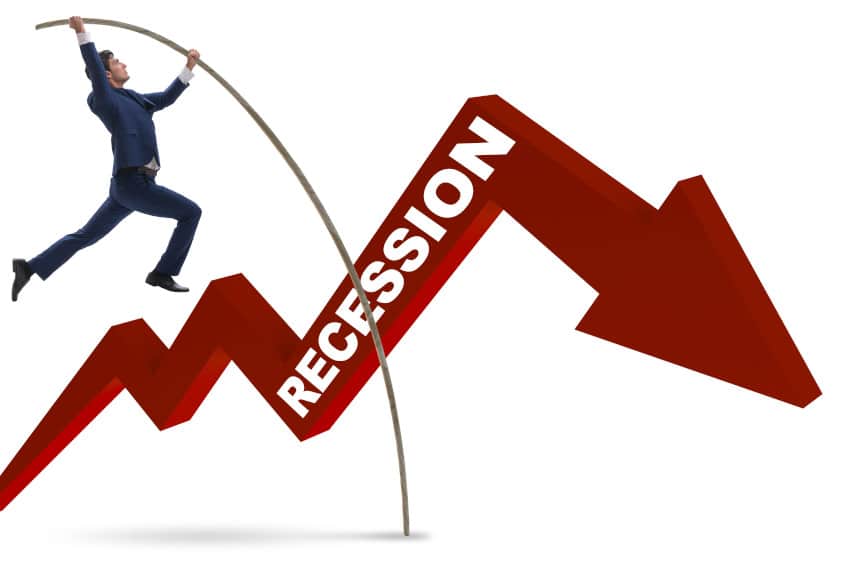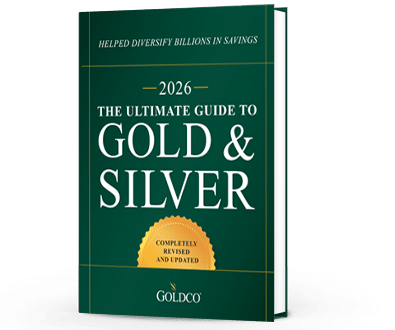Why Does Gold Have Value?
If you’ve done any reading about investing in gold, you’ve probably read that one of gold’s characteristics is its intrinsic value Of course, from the perspective of pure economics, nothing has...
Goldco Precious Metals Blog

Many people fear the specter of a recession. Declining economic growth, higher unemployment, and inflation are all among the hallmarks of recessionary periods. Businesses fail, workers fear job loss, and the general attitude in society becomes incredibly pessimistic. But what if recessions weren’t such a bad thing after all?
Think of recessions as a bit like a wildfire. It roars through an area destroying everything in its path. But in its wake, new growth begins. Or think of it as like lifting weights. You break down muscle when you lift, but you grow back stronger.
That’s why, although most people fear recession, they’re not always a bad thing. After all, like you’ll sometimes hear about the Great Depression, it’s not too bad as long as you have a job.
For those who lose their jobs during a recession, recessions are obviously painful. But for those who remain employed, or who are retired and have assets, recessions can provide new opportunities for asset growth, particularly at the bottom of a recession when asset values are low.
For every negative of recession, there’s bound to be a positive. And here are four of the biggest positive factors of recessions.
Recessions have a way of shaking out dead wood. During boom times, it seems like making money is easy. Just think of the various “can’t miss” ways of making money that have preceded major crises, like house flipping or day trading. We’re in one of those eras today, as retail stock trading has once again become incredibly popular.
But when the recession hits, many of those who thought making money was stupidly easy end up realizing that maybe they were the stupid ones. They find themselves over-leveraged, owing money, and losing money. And because they don’t actually have a clue how to really invest, they’re left floundering when the recession comes.
It’s much the same for companies, as companies with high debt loads such as zombie companies end up going bankrupt. Recessions have a cleansing effect in that way, forcing out inefficient and uncompetitive companies so that better run companies can continue to succeed.
Austrian business cycle theory teaches that the cause of the business cycle is malinvested resources. Central bank or central government monetary intervention to stimulate the economy ends up causing scarce resources to be malinvested, i.e. invested in ventures that don’t or won’t actually meet consumers’ needs.
Consumption is pulled forward, and when these ventures come to fruition, there is no market left. Think of the housing market from 2007 onward, when huge numbers of houses sat empty because people could no longer afford them. The financial crisis unmasked the reality that many of the houses that had been built to sell to people who had no business buying a house. And homebuilders, banks, and others were left holding the bag.
It’s the same with many businesses, who expand their operations expecting more business in the future. But because consumption has been brought forward through monetary stimulus, once those businesses are ready to ramp up production, there is no market for their goods. Their resources have been malinvested, and the recession signals that they’ve made a mistake.
Of course, those malinvested resources have to be allowed to be repurposed. But if central banks pump money into the financial system through quantitative easing, or if they set up credit facilities to keep struggling businesses in operation, those malinvested resources can’t be used for more efficient purposes. And we’re left with a large percentage of companies that should have gone out of business years ago but that are being artificially propped up. At some point there will be a day of reckoning, when those companies will go belly up, and the future recession will be even more painful.
Just like shrubs and seedlings emerge from the aftermath of a wildfire, so too do small businesses emerge from the ashes of a recession. Some laid-off workers decide to start their own businesses. Equipment and real estate that larger businesses no longer need or no longer can afford end up getting snapped up by new businesses. And sometimes these new companies end up growing large and successful enough that they become major players in their field. But in many cases it’s the effect of recession that provides the impetus needed to get these companies started.
Recessions thus are kind of a natural cleansing of dead wood. Companies that are inefficient and sclerotic go out of business, allowing new entrants to make their way ahead. But once again, if governments and central banks introduce monetary and fiscal stimulus to maintain the status quo, this process gets short-circuited. The small businesses that otherwise would pop up in the aftermath of the recession never get started. And the larger businesses that should go bankrupt and make way for challengers to enter remain in the way.
Just because traditional financial investment assets lose value during recessions doesn’t mean that all assets lose value during recessions. Precious metals like gold and silver are among those that traditionally perform very well during recessionary periods. During the stagflation of the 1970s, for instance, gold and silver saw average annualized gains of 30%, far higher than both inflation and stock markets. And during the aftermath of the 2008 financial crisis, gold nearly tripled in price while silver more than quintupled.
Every cloud has a silver lining, or in the case of recessions, a gold and silver lining. Your stock and bond holdings may get hammered during a recession, but if you own precious metals you can often protect that portion of your assets from major loss.
Investing in precious metals doesn’t have to be difficult either. With a gold IRA or silver IRA, you can invest in physical gold or silver coins and bars while still enjoying the same tax advantages as a traditional IRA account. You can even roll over or transfer assets from existing retirement accounts into a precious metals IRA tax-free.
But as with any other investment that is intended to protect your wealth, the best time to act is before disaster strikes. Waiting too long could result in losses to your portfolio.
Just think of all the investors who continued holding on to their stocks in 2008, confident that their losses were just a little blip. By the time March 2009 rolled around, they had lost over 50% of their assets, while gold had gone up 25%. Many millions of investors suffered those losses, and failed to take advantage of gold’s growth.
Don’t let that happen to you during the next recession. Call the precious metals experts at Goldco today and put yourself on the path to protecting your precious savings.

